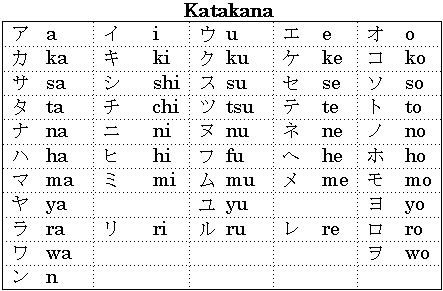
The Japanese writing mainly consists out of three parts. First of all the two kana alphabets for simpler writing, hiragana & katakana. And then the chinese writing Kanji.
There are a lot of ways to write romanized Japanese (rômaji), but the most popular way is the so-called Hepburn romanization system, because it reflects the japanese pronunciation best. The only disadvantage of the Hepburn system is that there are hardly any typewriters or computers that has the straight line which is used to mark an extended vowel.
The Japanese writing mainly consists out of three parts. First of all the two kana alphabets for simpler writing, hiragana & katakana. And then the chinese writing Kanji.
There are a lot of ways to write romanized Japanese (rômaji), but the most popular way is the so-called Hepburn romanization system, because it reflects the japanese pronunciation best. The only disadvantage of the Hepburn system is that there are hardly any typewriters or computers that has the straight line which is used to mark an extended vowel.
From the beginning Hiragana was used by women, while the more complex Kanji were used by the men. Because of this Hiragana was called "Onnade", which basicly means "woman's hand". But in the end of the 9:th century Onnade became a more common system and became an accepted alphabet for writing poetry.
It was fully accepted when the Royal Poetic Anthology was written in Onnade.The word hira mean "common", "simple", or "rounded". This is because it is much easier to learn that Kanji, which mostly consists of considerably more advanced characters.

Katakana consists just like Hiragana out of 46 characters for writing non-Chinese loan-words, onomapoetics, emphasized words and names for both humans and flora and fauna.
The word kara in this context mean "part", "not whole" or "fragment". It has gotten this name since most Katakana are simply just pieces of the more advanced Kanji.
It first showed up in Buddhistic texts to simplify the pronunciation of advanced parts. Later it became more popular and was mixed with other Japanese texts. The way of mixing Kanji with Katakana is called kanamajiri.
During the 10:th century people started to make verses with Katakana.
